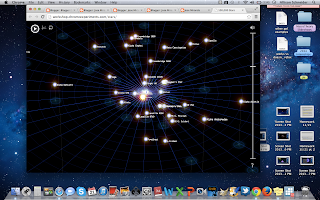Size Difference
I thought this was a good example
of size difference. As you can see, the cactus in the front is bigger, and the
one further away is smaller. The size difference signals the distance between
them.
Atmospheric Perspective
Here is a screenshot
demonstrating atmospheric perspective. The rock in the foreground is very
clear, while the rock all the way in the back is fuzzy and lacks detail. As
objects are further in the distance, they become less detailed.
Lighting & Shading
Here, you can see lighting and
shading on the tree pots and on the light post. The light is hitting the left
side of the objects, and so the shadow falls on the right side, giving the
curved shape to the objects.
Linear Perspective
In this picture, you can see the
linear perspective in which the lines converge to create movement and distance.
The lines run parallel and become closer as the distance increases.
Occlusion
This is an example of occlusion,
where we can see the plant obstruct the view of the tree, and then the tree
obstructing the view of the rock. This leads to portions of the rock and the
tree being hidden. This creates depth in the image.
Texture Density
This screenshot demonstrates how
texture becomes more dense as distance increases. The stones closer to view are
more spread out, and the ones in the distance are more dense.
This is a final exercise from the Immersive Education course that I am taking at Boston College. The course is called Discovering Computer Graphics. For details, visit the immersive BC portal at
http://ImmersiveEducation.org/@/bc




















